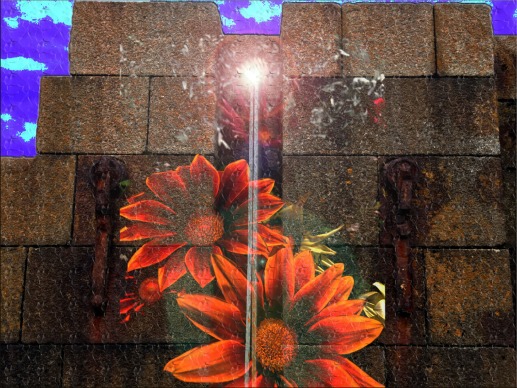
Something had happened when we decided to approach the strange village by walking along the beach and coming to it via the old but grand harbour, with its mighty blocks and sea-gates. It was only later that we realised that what we had, inadvertently, photographed in the far distance was the focus of the whole story.
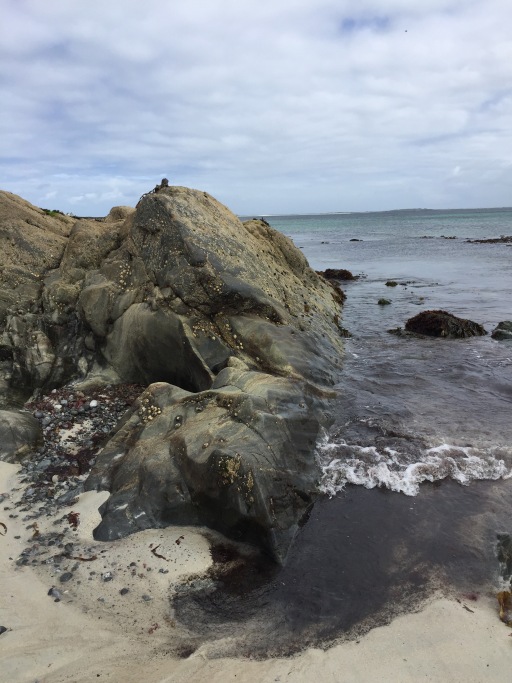
You could relate it to one of my favourite Gurdjieffian pastimes: stopping the world. This technique requires a degree of stealth and an ability not to be embarrassed by the unusual – and your part in it! Stuart and I once caused such a moment of presence by each turning around from our table (shared with a very amused Sue) in a cafe and facing the opposite way (outwards). We were not trying to be irritating, just to do something unusual. The people we were sharing the cafe with took it in good part and assumed we were doing something humorous, possibly for a bet.
On that day we had stopped after a few seconds; we had no desire to prolong it, simply to create the experience, good-naturedly, as an extension of the serious conversation we were having.
There is something about the silence generated that tells you you've got it right. It doesn't have to be in public, but there's something about that arena that generates a feeling that something else is watching…
As we walked – the wrong way – through the harbour gates and into the strange village of Hynish, I had that same feeling…
The name 'Stevenson' was on a plaque by the harbour wall. It rang a bell. I remembered a Robert Louis Stevenson as the author of Treasure Island and Kidnapped; and had the idea that he might also have written The Strange Case of Dr Jekyll and Mr Hyde; but I didn't think he built harbours…
What I didn't know was that the name Stevenson was that of a family of gifted and determined eighteenth century Scottish engineers, and that the uncle of Robert Louis Stevenson the author was a man named Alan Stevenson, and that what he and his father – Robert Stevenson – accomplished was the reason for the strange village of other-worldly buildings on this remote corner of the Scottish island of Tiree.
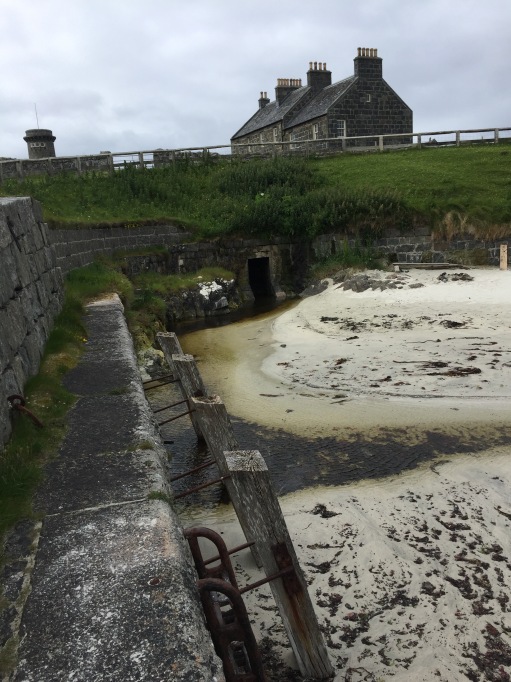
The view from the harbour was of a set of what looked like cottages, with a tower to their left.
The tower was related to that view out to sea; the cottages were the modern home of the Skerryvore Lighthouse Museum, which had been established by the Hebridean Trust and lovingly restored and re-established over the past ten years to protect a vital piece of Scotland's history.
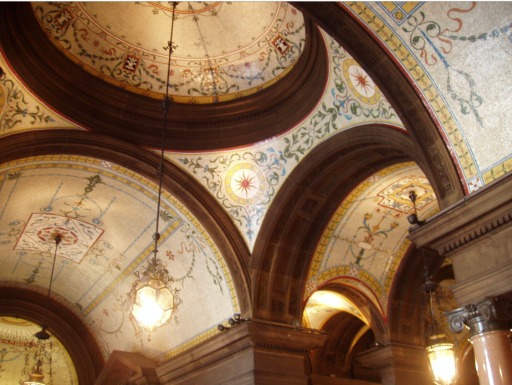
To understand the importance of Hynish and Tiree to Scotland's past you need to understand the way Glasgow developed in the 18th century. From a purely personal perspective, Glasgow has always been my favourite city, north of the border, because I have family there and it was the scene of many happy holidays in my teens – one of them involving my first long motorbike ride (in the pouring rain!). To find, all those years later, that Glasgow's early success as an international city had justified what happened at Hynish was a thrilling discovery.
Following the Act of Union in 1707, Scotland was free to trade, on equal terms with England, with the New World. Lucrative cargos of rice, tobacco, cotton, sugar and rum could now be imported to the Union via the deep estuary of the River Clyde. James Watt's 1760s invention of the steam engine also made Glasgow the most important exporter of manufactured good to the colonies. However, Between 1790 and 1844 more than thirty ships were known to have been wrecked in the area off the western edge of the inner Hebrides, as they fought the seas to enter and leave the Clyde.
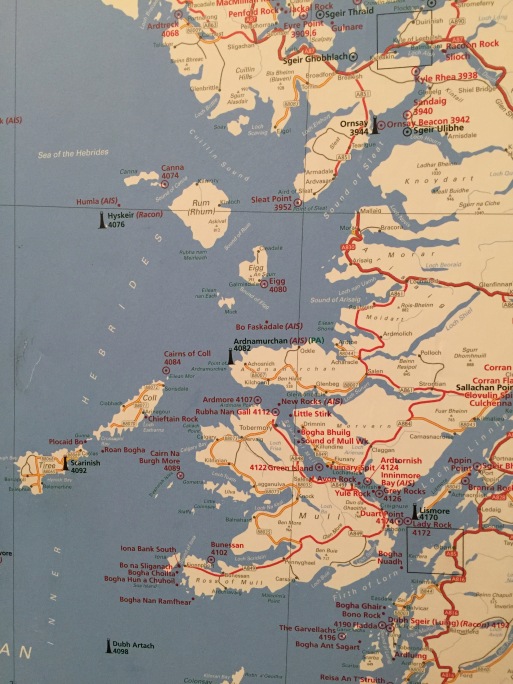
In 1814 an Act of Parliament was established to survey and fund the construction of an offshore lighthouse on the obstructing and deadly skerry.
The Skerryvore rocks, located just off the bottom left edge of the map, above, were ten miles west of Hynish and the father and son team appointed to survey, design and build this enormous undertaking was Robert and Alan Stevenson. Work began on the construction of the lighthouse in 1738.
Our cycle ride had stumbled on the Shore Station that was built to support the construction of the Skerryvore Lighthouse – ten miles offshore. Later, a more makeshift station on the Skerryvore rocks, themselves, was constructed. As an indication of the severity of the weather, the latter, comprising a three storey structure for supplies, managers and thirty workers, was completely destroyed by a storm in November 1838. It was redesigned and built again in time for the following spring – the workers having agreed to stay and work on the rock through the winter!
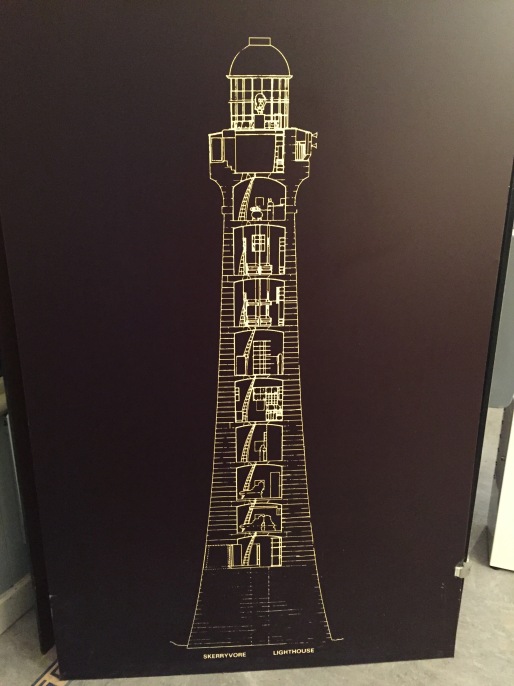
The most complex part of the lighthouse was its clockwork revolving light, which, incredibly, amplified the wicks of only four oil 'lamps' and projected them across the deadly darkness. The key to this optical power was the use of the latest Fresnel multi-part lenses, which Alan Stevenson commissioned from the French Fresnel brothers in 1840. The eight lenses were (and are) only the size of dinner plates, but could project a bright beam over thirty miles!
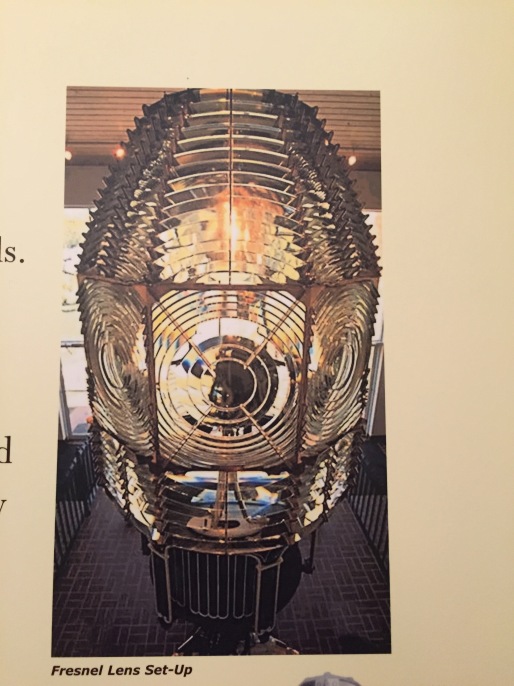
The lighthouse went operational in 1844 and the Shore Station was converted for use as living quarters for the shift of lighthouse keepers and their families.
Today the lighthouse is automatic, and it is controlled remotely from Edinburgh. The entire structure of Stevenson's design has remained in near-continuous operation since its commissioning.
Without the museum you would never know that the line of waves breaking far offshore, marks one of the world's engineering marvels, nor the reason for the existence of this strange and haunting place where so much happened, but which is no so quiet…
Despite the weather, our day had brightened. We wondered if we dared hope for a continuation of our good fortune?
An aside…
I was really moved by this visit and wrote a poem shortly after, which was published on my personal blog Sun in Gemini blog. It is reproduced, here:
The Skerryvore Light
In tiny Hynish's western shore
Where gentle waves now kiss the sand
The resting seas recall the names
Of they who built the Skerryvore
➰
Forgotten in the passing nights
Unknown to most, of even few
Who chance on Hebridean soil
And stumble on the wreck of lights
➰
For ears a story here in stone
Which value engineers of night
Of iron and glass and fearsome seas
That rivals any ancient tome
➰
Not shifting sands or limestone frieze
No Pharaoh wise, nor Mayan king
Have ever dared to light the night
With giant tower upon the seas
➰
In deep of howling winter's night
I'll sit upon my writer's keys
And 'Stevenson' will be the word
The image: glass infused with light
➰
So come from history, taking bow
From we who sail on greatness past
We bow to you, who built our age
Forgotten on the quiet sands of now
➰
©Stephen Tanham
To be continued…
Previous posts in this series:
Steve Tanham is a director of the Silent Eye school of Consciousness. His personal blog is at stevetanham.wordpress.com
©Copyright Stephen Tanham, text and pictures. Re-use with permission.

Thank you, Sue x
The (lady) figure in the rocks appears fiercely protective…I’m quite intrigued by that first image.
She did draw me back from the harbour wall to photograph her…
Such a strong energy. And I love that it appears so strongly feminine. It just seems right, with the water and all…
A most interesting post and a lovely poem, Steve.
Thank you, Robbie. I posted the poem on Sun in Gemini a few weeks ago, but it seemed right to include it, again.